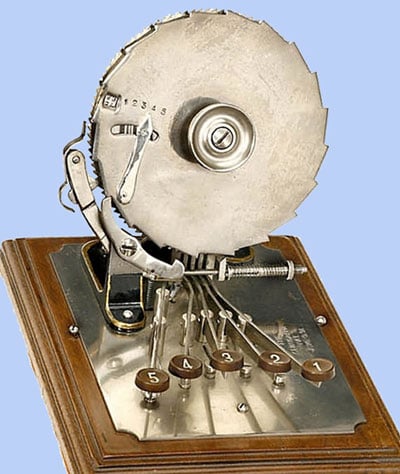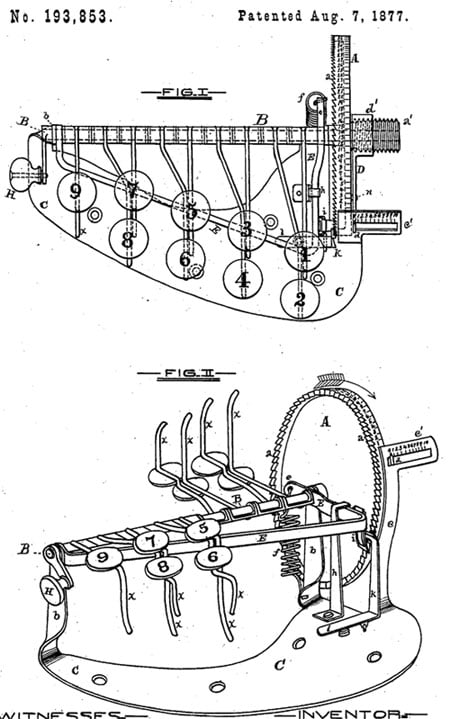In the 1800s, machines called single adders were used. Marshall Cram made one such machine, although it could only add one digit at a time. To use his machine, you had to enter the units column first, then the tens, and so on until you added all the numbers. It was a rather tedious job, as you had to write down each partial sum on paper before adding them all up. However, it was a useful tool at the time and led to further developments in computing technology.
Marshall Cram and His Adding Machine
On August 7, 1877, Marshall Moses Cram (1851-1938) of Mankato, Minnesota, received a U.S. Patent 193853 for an adding machine, similar to the later Centigraph of Arthur Shattuck. In contrast with Centigraph however, the device of Cram remained only on paper. The purpose of the device was to add single digits at a time, starting from units, then tens, hundreds, thousands, and so on. While today such a device sounds tedious and time-consuming, at the time it did provide some limited use. In addition, despite its limitations, Cram’s calculating machine was one of the many innovations that led to the development of early computing technology.

Marshall Cram was a holder of three other US patents (for a boiler cleaner (US634521) and for profile measuring and recording devices (US987863 and US1308580)).
Let’s examine the operation of the device, using the patent drawings (see the lower drawings).

The figures on the slotted indicator scale (marked with c’) indicate hundreds, and those on the periphery of the wheel just above the indicator are units. The operator works the keys with his right hand, the thumb being used on key No. 9. To add a column of figures, a key corresponding to each figure is pressed down as far as it will go, and allowed to rise again before pressing another.
After pressing keys to correspond with all the numbers, the sum is read off from the indicator, as shown by the pointer, and from the wheel just above the indicator.
If another column is to be added, set down the right-hand figure, the others being “to carry”; then, pressing the lever (), turn back the wheel by means of the crank (), as far as it will go, when the pointer will be at on the indicator, and 0 0 will show on the flanged ratched wheel () with one hundred teeth (a a).
Then count first what there was to carry, and proceed with the next column.
Marshall Cram: Early Life, Career, Marriage, Children, and Death
While we do have information about his patents and adding device, there are not many records of Marshall Cram himself. Cram was born as the youngest of eight children. His parents, Moses Bailey Cram and Rachel Amanda Pond, welcomed their youngest baby into the world in Republic, Ohio, on June 2, 1853. Sadly, Cram’s mother passed away when he was just a toddler, leaving his father alone to care for their large family. Cram’s father later married his first wife’s younger sister, Lucy Clarinda Pond, in 1855. The two had three more children, but sadly Cram’s father lost his second wife as well in 1865.
When Cram was 22 years old, he married Mary Grice, and together they had one daughter. Cram died when he was 88 years old in Minneapolis.
The image featured at the top of this post is ©G-Stock Studio/Shutterstock.com.


